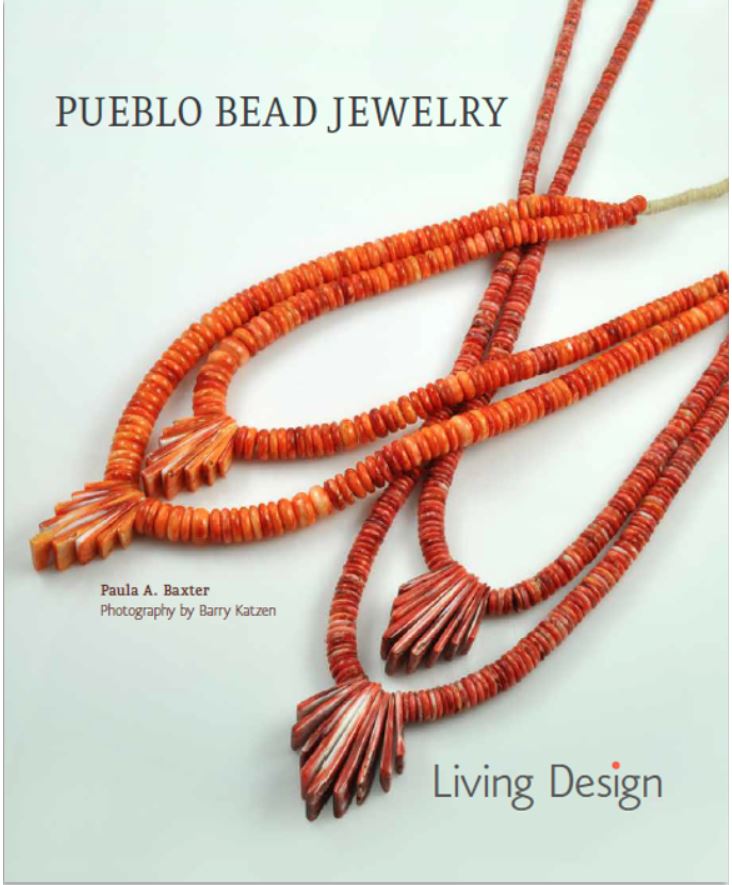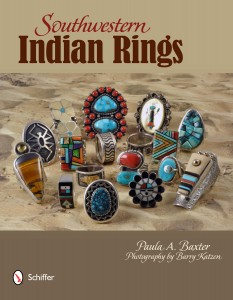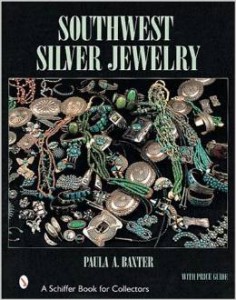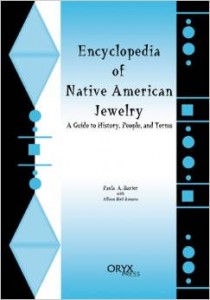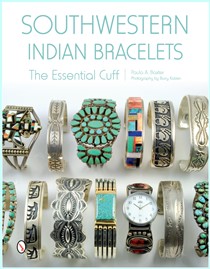Did you know that Azurite became a popular mineral for Native lapidary work in the 1980s and 1990s? It’s actually a gemstone containing copper carbonate with rich blue color. Azurite is closely related to malachite, a popular green gemstone and can even chemically combine with it.
Fact: Azurite can be found in the upper layers of copper deposits in Arizona and California.
Now that the holidays are here, there has been renewed consternation expressed in Facebook’s special groups related to Indian arts, and jewelry in particular. Sellers on eBay are pushing bogus fakes and calling them the works of various older masters. There’s always been a fakery market for the big dogs — Charles Loloma, Preston and Jesse Monongye, Leekya Deyuse… But now sellers are scanning the literature (including my books) and claiming their pieces are works by Dan Simplicio, Austin Wilson, Julian Lovato, and others who command respect and strongly competitive prices in the historic and vintage market.
Fact: Consumers need to stick with ethical dealers, and not assume such an item for sale is their chance to score a coup.
I’m back on the topic of eBay again. After a string of disgusting fakes have come through one of my Facebook groups “Historic Zuni Jewelry – Let the Buyer Beware,” I am more than annoyed. The Indian jewelry market has been shadowed since its inception by fakers and misrepresentation. The biggest villains have been out of the country — Pacific Rim, Mexico — and some small time operators working in reservation border town basements. Now, the American seller public is cheerfully offering bogus pieces and a little education on their part goes a long way toward fraud. These operators have picked up on the collector taste for genuine works by Native artists with “names.” Now, every item we’re seeing is promised as a real Leo Poblano, Dan Simplicio, Bernard Dawahoya, the list goes on. There’s even a consumer warning group devoted to Charles Loloma forgeries!
Fact: Maybe it’s time eBay does something about kicking these snake oil salespeople off the site…
Anasazi is a term that endures despite the fact that descendants prefer another label altogether. These “ancient ones” lived from 100 BCE to 1300 CE in the Four Corners region of the Southwestern United States. Their pottery and jewelry designs remain popular decorative motifs used with pride by Native peoples of the region. For a long time, archeologists and anthropologists grappled with the “mystery” of these peoples’ disappearance from their cliff and mesa-top stone dwellings; certain professionals active in the mid-to-late 20th century cited “cannibalism” or “extreme drought” as facts in their vanishing, which became a romantic story in itself. Later, the idea of a Katsina Cult became a pervasive idea that led to the abandonment of their homes and relocation
Fact: Pueblo peoples have come forward to explain that the Anasazi were predecessors who relocated, moved to different areas, and should be known as Ancestral Puebloans.
One of the design gifts of the Anasazi, or Ancestral Puebloans, was their ability to reproduce animals with skill and spirit. Creatures that had associations with water, such as frogs and tadpoles made fine designs, but Pueblo facility with rendering insects, butterflies, deer, and rabbits, are remarkable features, especially in the work of the Mimbres tribes of central and southwestern New Mexico.
Fact: Such designs, especially of spritely four-legged animals, remain popular since the tourist era of the Fred Harvey Company.
When I began collecting Southwestern Indian jewelry in the late 1980s, I was surprised at how meager research resources were to guide intelligent buying. That revelation turned into years of investigation and then The Encyclopedia of Native American Jewelry. Years later after its publication, I’ve learned that the quest for knowledge still goes on. I plan to use this section of the website to bring out educational points covered in the Encyclopedia. But I would also like to mention artist who are working now, who could use a little more internet exposure. I’ll alternate between facts for learning and facts of artists creating. Maybe the best fact of all to absorb is that Native talent is unending. Buy Native – not fake – and you’ll never regret it!
When I first compiled the Encyclopedia of Native American Jewelry, eBay had not become the force it now is. While I am honored in a way that my books are often cited as part of a selling fact on the part of a seller, I’m less amused by something else I see out there. Many people are attempting to sell online so-called Indian-made jewelry and they are attributing the pieces they have as the work of certain masters. If I had a nickel for every “Dan Simplicio,” “Frank Vacit,” or “Austin Wilson” piece that is hawked, I could book a flight to the Southwest at once! Not to mention the claims for a genuine “Charles Loloma” bracelet or ring! Fact: be careful, be very, very careful who a seller says made the item in question.
Let’s start with the letter “A” when examining facts. Abalone is not a material one quickly associates with the desert, canyon, and high plateau geography of the American Southwest. But abalone is a preferred material with spiritual associations for the Native peoples of the region. The inner shell of this mollusk shell forms mother-of-pearl which is used for inlay on adornment. Abalone and dentalium have been strung onto necklaces since pre-contact times. Pueblo Indians traded with California, Plains, and Plateau region tribes.
Fact: Abalone faced possible extinction in the 1990s from pollution and overharvesting.
